Don’t Close Your Eyes
October 21 - December 21, 2023
Opening Reception: Saturday October 21st, 2023 (12-4pm)
HALYNA ADRUSENKO | AVE | KSENIA DATSIUK | NASTYA DIDENKO | MITYA FENECHKIN | ALISA GOTS | EVGEN KLYMENKO | NATALIA KURNOSOVA | LENA KURZEL | INGA LEVI | ANTON LOGOV | ROSTYSLAV LUZHETSKYY| DANYLO MOVCHAN | ANZHELIKA PALYVODA | OLEKSII PAVLUSENKO | OLEKSII REVIKA | VLADYSLAV RIABOSHTAN | ANDRII ROIK | OLESIA RYBCHENKO | VALERIIA "T" RYBCHENKO | ZAKHAR SHEVCHUK | OLENA SHTEPURA | KARINA SYNYTSIA | NIKITA TSOY | ILYA YAROVOY | OLGA ZAREMBA
Curated by Hanna Melnyczuk and Halyna Andrusenko
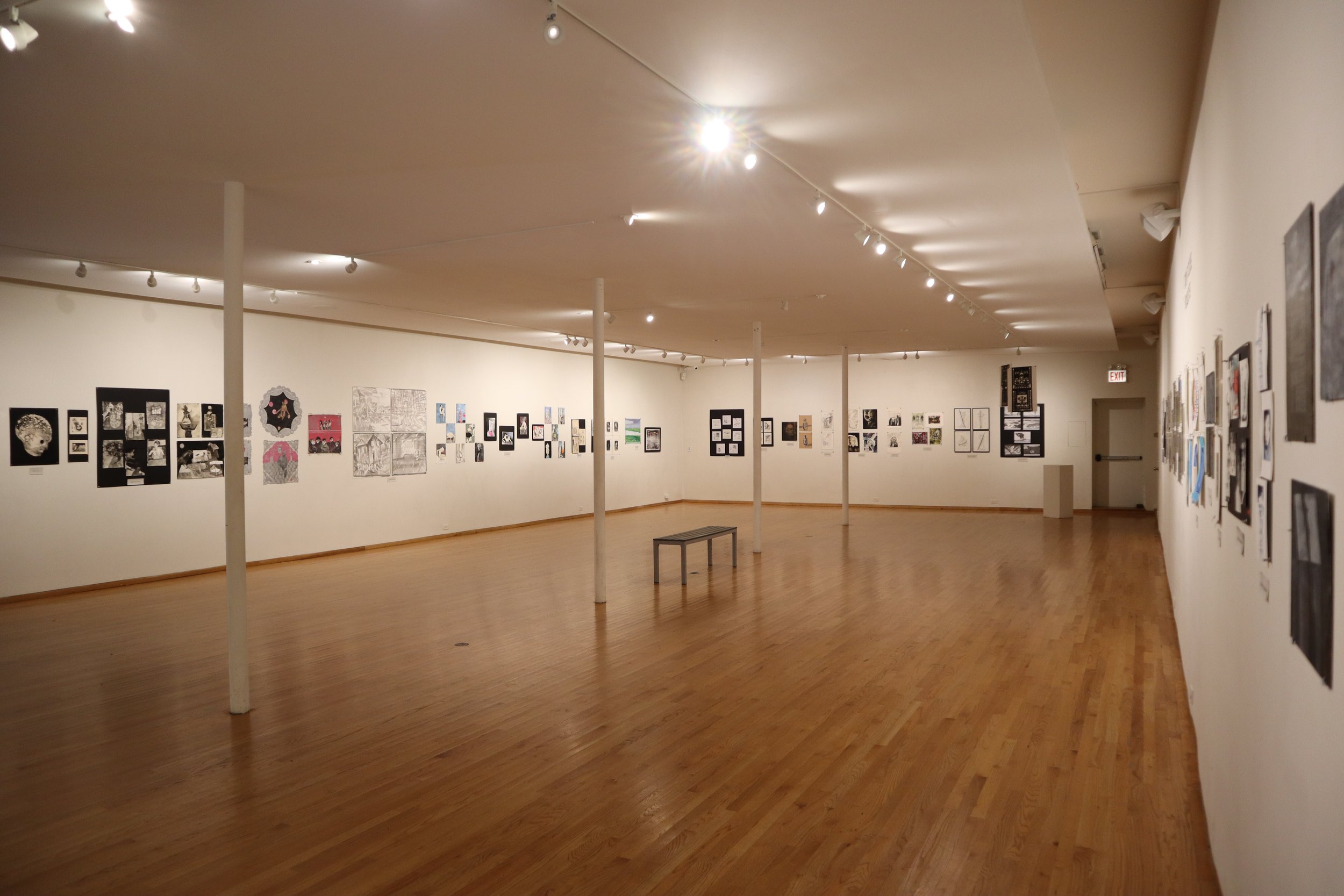
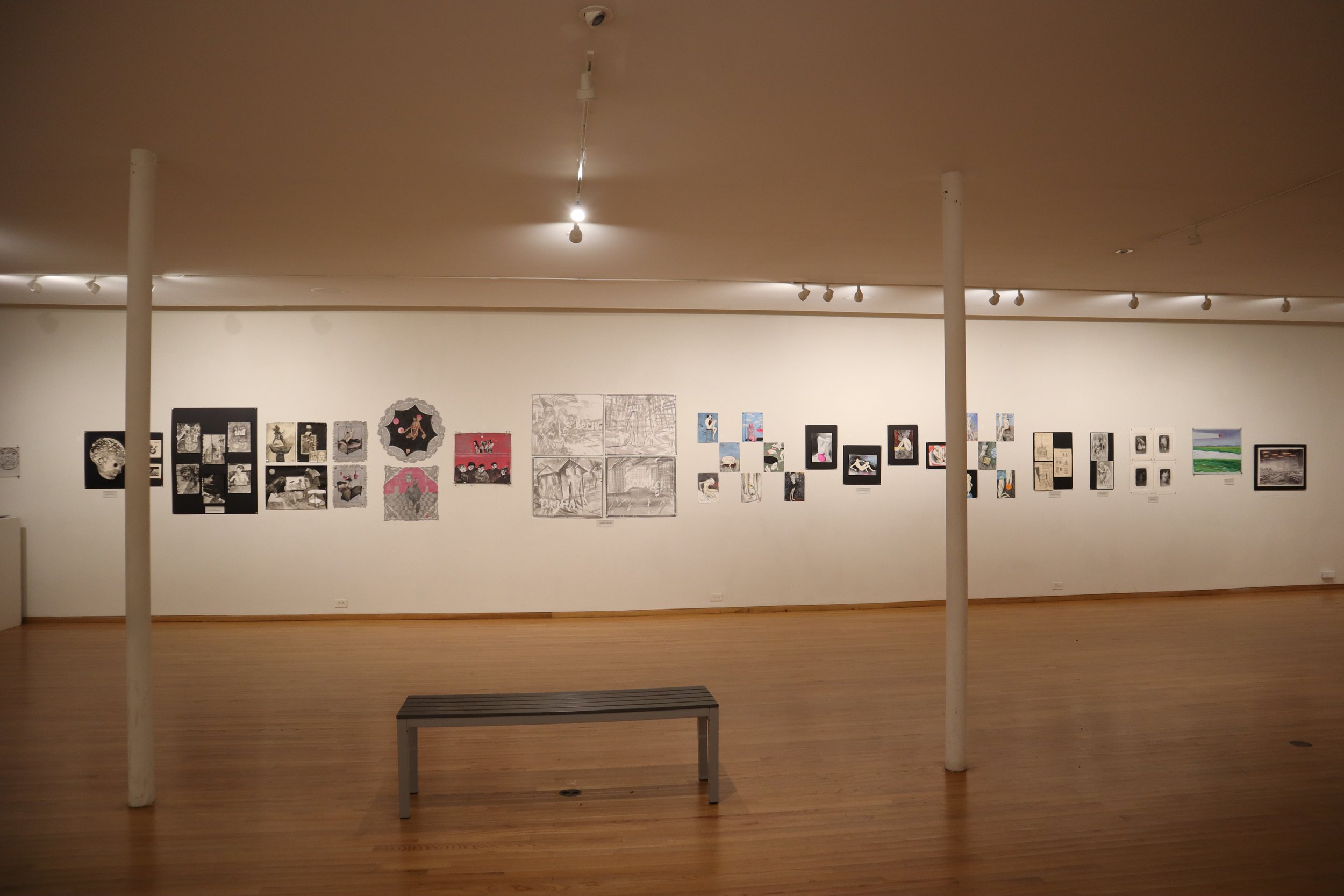
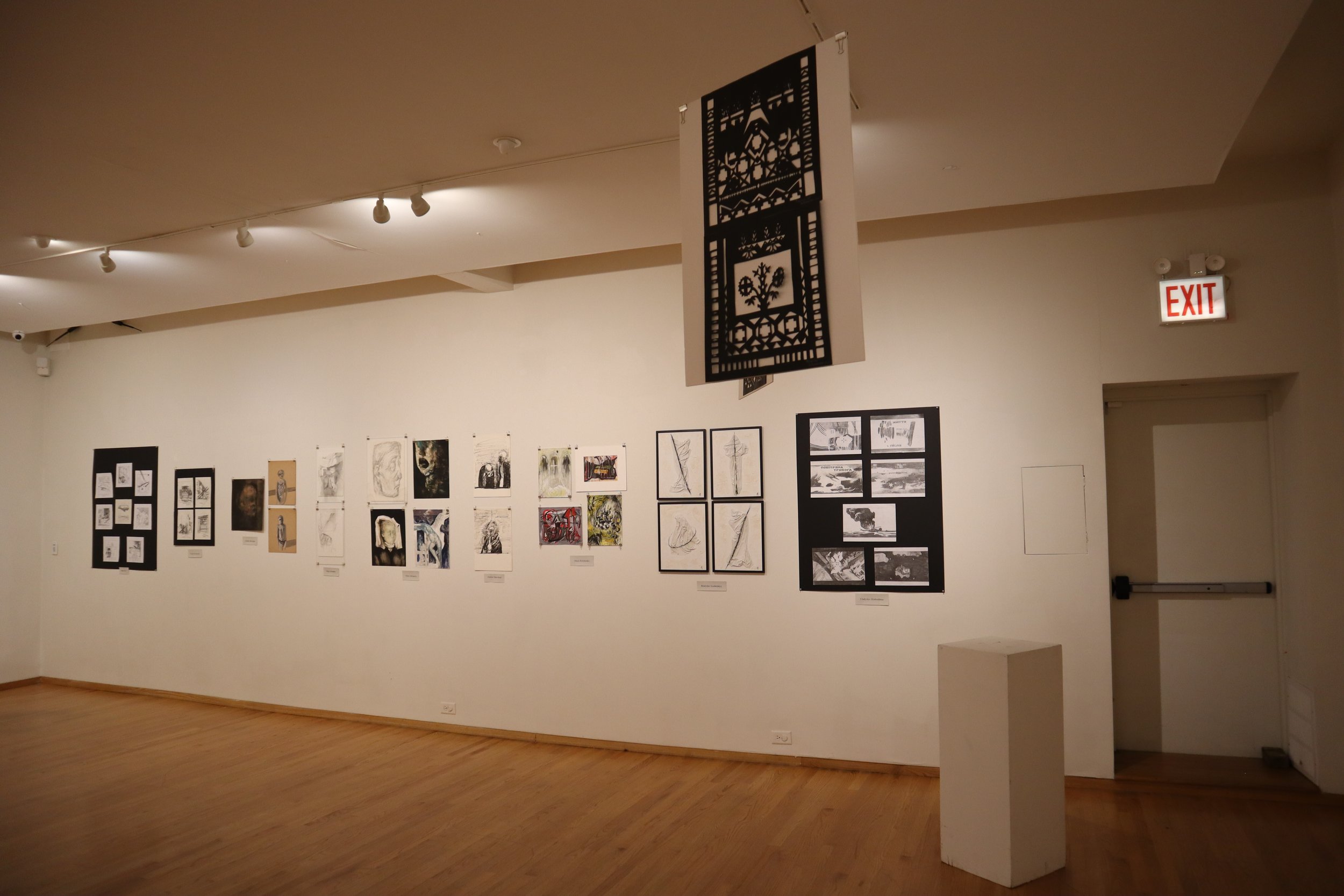
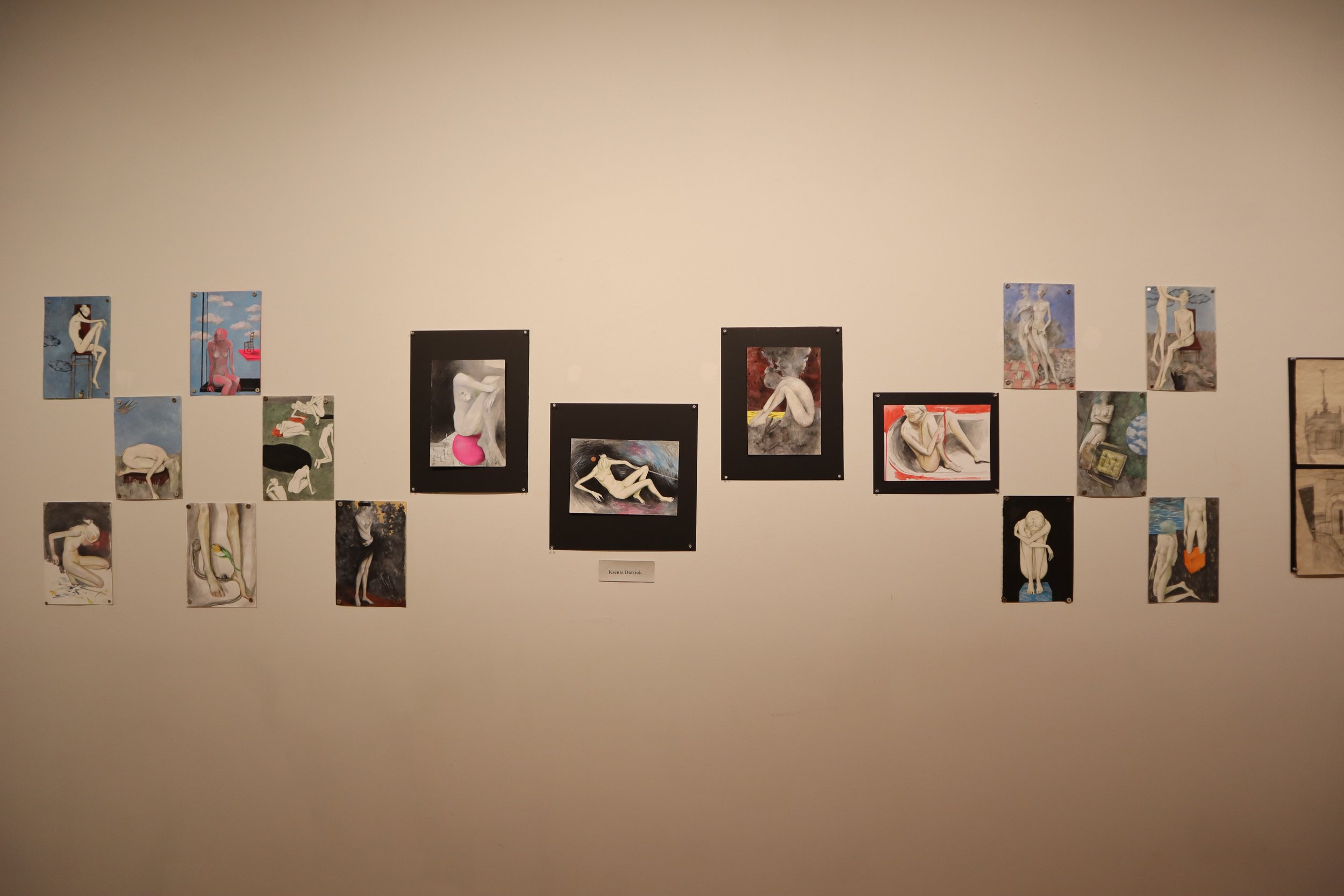
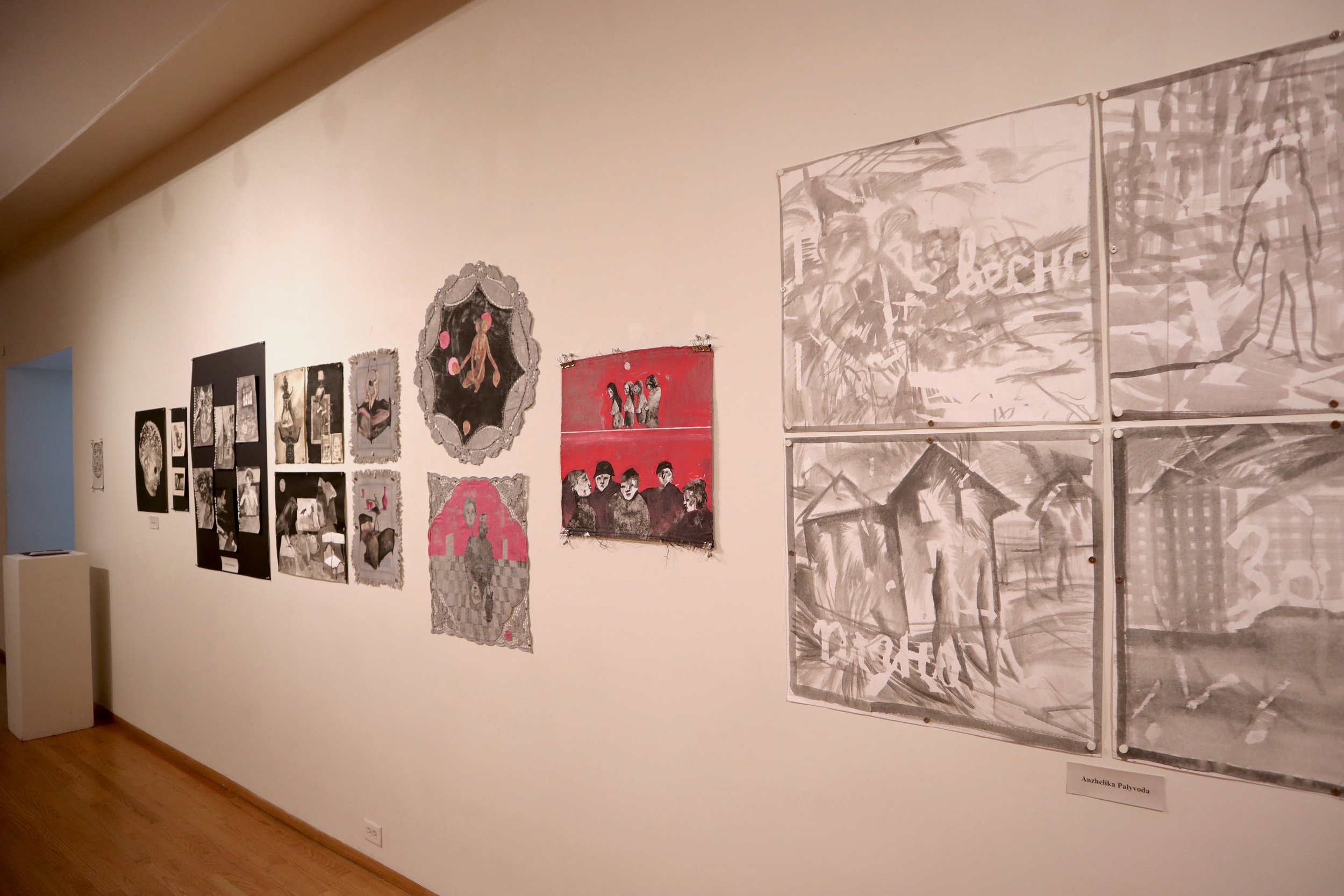
How do artists depict war? It is one thing to photograph the scene before you, but another to sift through information at a distance. The brutal irrationality of violence, and destruction. How does one convey the massacre in Bucha through a drawing that impacts the audience? What forms, colors, images does the artist use? Some of the artists represented in this room, such as Inga Levi, have been documentarians of the daily events that come with war. Inga, who worked on/created comic books, adapted the specialized style to her depictions of the war, as her complex, layered compositions evoke curiosity in the viewer. Halyna Andrusenko has turned to a meditative depiction of monuments in Lviv, which are draped in cloth to be protected from falling bombs. Halyna also created a video in which she wraps her parents in cloth as an act of protection. Rydoslav Riaboshtan bases his spontaneous graphite drawings on the instruments of war and the scenes of battlefields by referencing photographs of the conflict. Danylo Movchan, an icon painter by practice, juxtaposes vibrant colors with tragic imagery to create the conflict of emotions evoked when listening to Chopin’s Prelude in D-flat Major, Op 23: No 15 “Raindrop”. Ilya Yarov seduces and horrifies us in his painting “Tulips.” We see helicopters in the distance from the perspective of a bed of colorful tulips to remind us of the beauty andfragility of all living things. It is difficult to not react to the raw emotion of Valeriia “T” Rybchenko';s self portrait "Loud" swallowing a tank. Ksenia Datsiuk uses her body and face to portray the heavy emotions and anxiety that settles into our beings/bodies when we think about the war. Evgen Klimenko captures the immediate shock of viewing destroyed building in his sketches. Olga Zaremba’s “Mutilated” depicts a pink deer that is wounded and looking at us with helpless dark eyes. Rostyslav Luzhetskyy’s pinkish red painting “Anxious City” conveys a feeling of wounded flesh, with dark gashes reminding us of all the suffering people have endured during the war. Olena Shtepura’s weeping women transform classical paintings into desolving images that change before our eyes into sorrowful images. Natalie Kursonova’s series of ”vytinanki” (cut-outs) are inspired by traditional Ukrainian paper cutting folk art. At the beginning of the war, she started making vytynanky firanky (cut out curtains) because the artist said she” could no longer draw, just cut due to the constant bombing all over Ukraine.”
Artists present to us their view of reality, which is necessarily different from what soldiers and other victims of war have experienced. Each artist’s perspective and method of artistic communication is unique. Each piece tells its own story. Each is an attempt by the artist to touch viewers like you, thousands of miles from where these events continue to unfold. They are asking you to stand with them. In return, they promise to stand with you.
